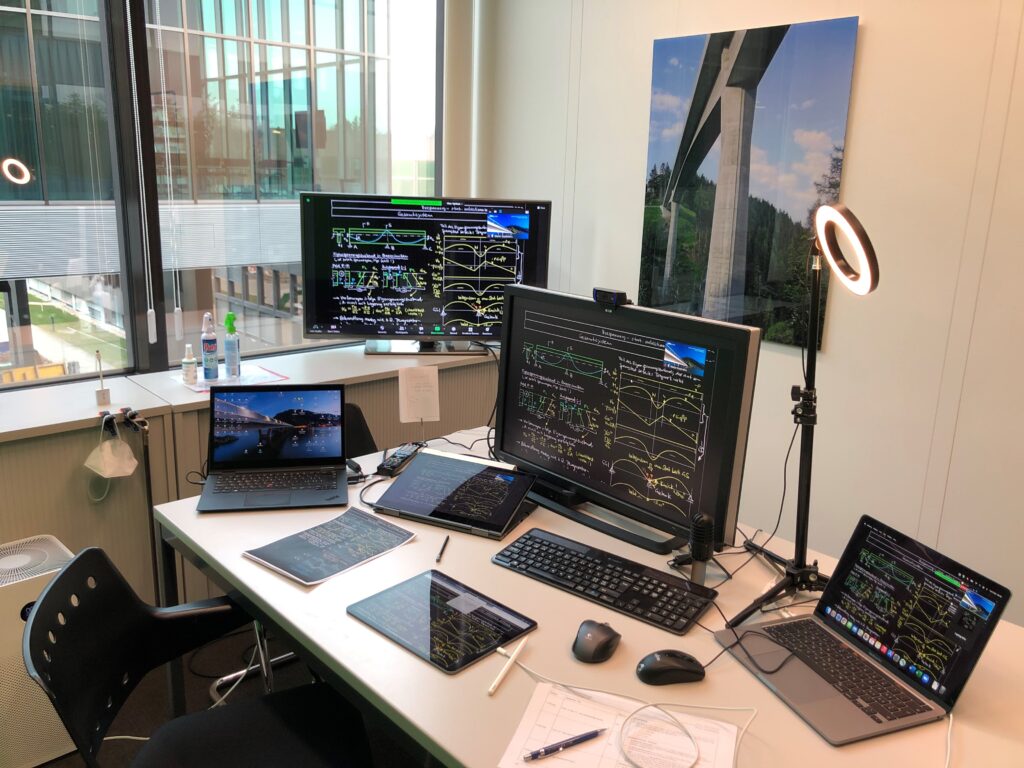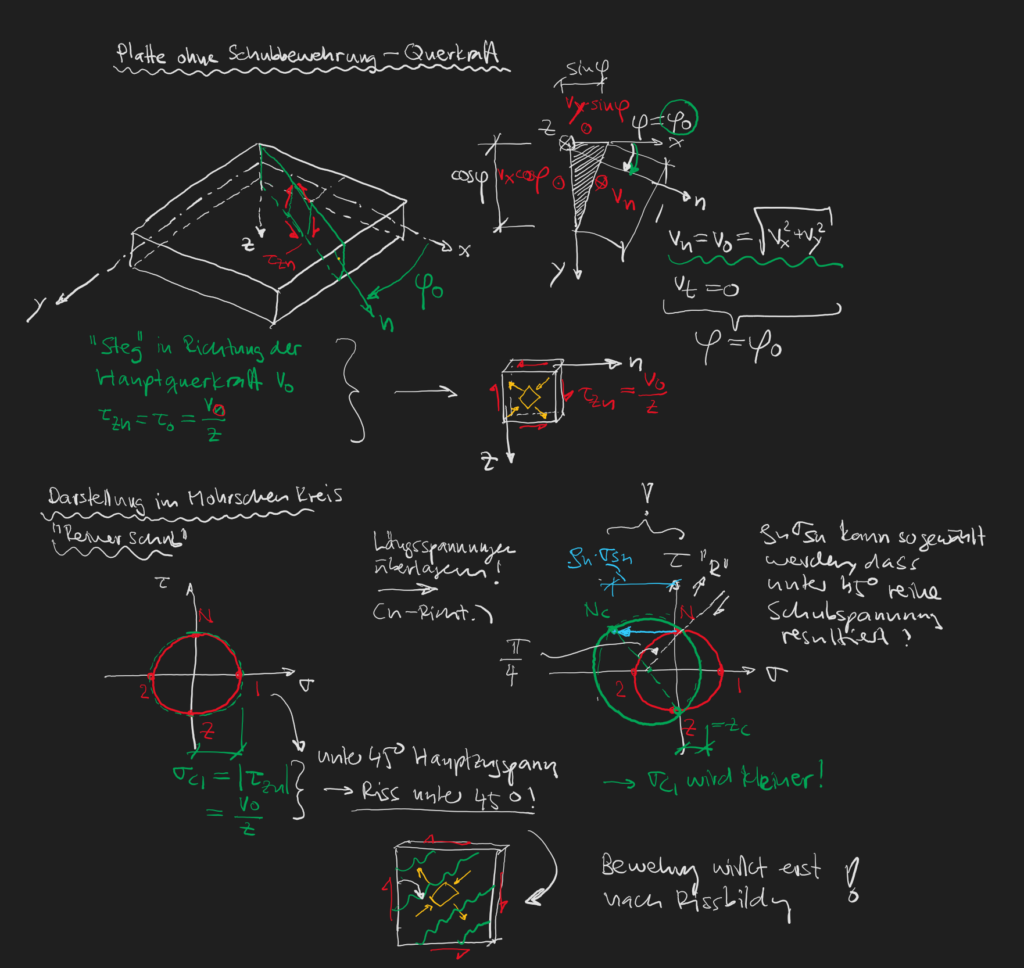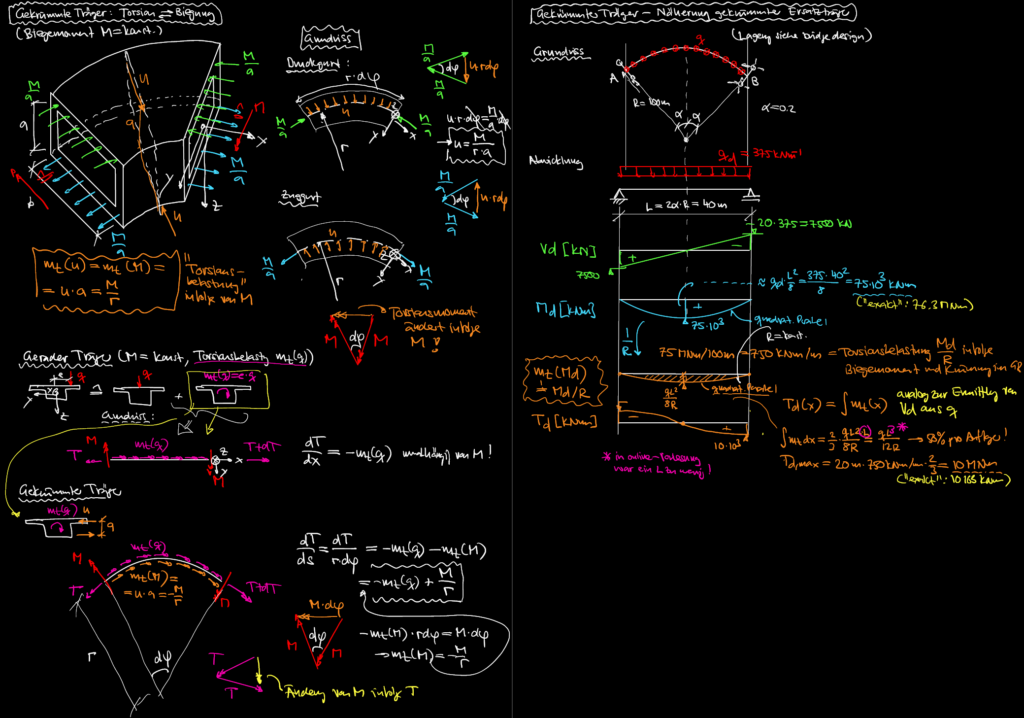Link zur deutschen Version: Lehre während der Pandemie
Four weeks into the Spring Semester 2020, on March 16th, ETH Zurich suspended classroom teaching, and we have not returned to physical presence for more than a year by now. In this blog post, I would like to share my personal review of our teaching activities during this year, as well as some thoughts on potential long-term lessons from the pandemic.
Classroom teaching suspended
From today’s perspective, the decision of the Federal Council on March 13th to shut down all schools could have been expected. Still, it was surprising to many of us. Although our Executive Board had decided to suspend classroom teaching already the day before – we were informed by the Rector on March 12th 2020, 21:27 – we had to adjust our entire teaching practice over a weekend, including the procurement of webcams and microphones, identifying a suitable online teaching platform, finding alternative solutions for the blackboard, and much more. Thanks to the effort of everyone involved, we managed to master the related challenges and successfully taught our first online lecture on March 16th, using Zoom as our platform. Since then, we have taught all lectures and colloquia online at exactly the same time they would have taken place at in the classroom. We consider this the best way to support the students in keeping at least a part of their normal student life and daily routine.
Lectures
For the lectures, we benefitted from our teaching platform concrete.ethz.ch that we had set up the year before: all course material was available to the students online already. Well, not really everything: The blackboard obviously could not be uploaded to the teaching platform, and finding an appropriate replacement for this didactic tool, which many students prefer to slides despite its old-fashioned appeal, was a major challenge. I initially used MS Whiteboard during the Spring Semester 2020, which made my writing look scribbly but otherwise gave decent results. However, the touchscreen of my Windows laptop regularly caused problems. Therefore, we switched to an iPad for the Fall Semester, when Dr. Jaime Mata Falcón is also teaching. While the writing experience of the iPad was clearly superior, its display was blurry when directly shared, and when connected via a Windows laptop, it frequently dropped the connection. Therefore, we are now sharing the iPad via a MacBook. On top of this, I am now also using our group’s teaching laptop, whose touch screen is superior to that of my personal device. This, in turn, allows me to connect my personal notebook as a participant to the lecture and check that it is streamed properly. With all these devices, my desk looks like that of a tech nerd reviewing devices for a laptop magazine during the lectures. And ironically, now that our streaming process has gone through this odyssey, the display quality of iPads shared directly in Zoom meetings recently improved drastically with a software update…
The course “Bridge Design”, which we were teaching in the Spring Semester 2020 for the first time, includes guest lectures by renowned bridge designers as well as flipped classroom exercises. Switching the guest lectures to the online format was a pity but worked well, and even the flipped classroom exercises could be carried out online successfully, by assigning the students to breakout rooms in a common meeting.

Colloquia
Apart from the lectures, the courses in Structural Concrete also include colloquia, which are taught by student assistants to smaller groups of students. Thanks to the skills and efforts of our student assistants, we also managed to seamlessly switch these to the online format during the Fall Semester 2020. An additional positive aspect are the web applications that we recently developed as part of our Innovedum grant: these can be used by the students on their own, but also in lectures and colloquia (more on these web applications and the entire Innovedum project follows in one of our next blogs).
Student projects
For the supervision of student projects, we essentially rely on the same online tools as for the lectures. During the first phase of the pandemic in March and April 2020, we were however facing a shutdown of the entire ETH, including offices and labs. This affected several experimental student projects, which we had to switch to theoretical theses. Thanks to the flexibility and effort of the students and their supervisors, all these projects could still be successfully completed. Since the Fall Semester 2020, experimental student projects have become possible again.
Exams
Fortunately, by the time of the regular exam sessions, the pandemic situation allowed to hold our written exams in physical presence. While this was also possible for the oral eams in summer 2020, we had to switch those to an online format in winter 2021. This was yet another challenge, since in our oral exams, the students sketch solutions to posed tasks on a whiteboard. Again, thanks to the effort and flexibility of all involved, this could be mastered surprisingly well. Overall, the performance of the students in the exams during the pandemic appeared to be slightly below previous years though, which may however be biased by the fact that the exams in summer 2020 did not count towards the maximum of 2 trials per exam. Perhaps a few students were tempted to take an exam less prepared than under normal conditions?
Conclusion
The transition from classroom to online teaching went very well, even much smoother than I had anticipated. This would have been impossible without the powerful online conferencing tools available today. As much as we may complain about software bugs: Can anyone imagine how ETH would have handled this pandemic had the virus decided to emerge 20 years earlier?
In fact, online lectures have their advantages. They can be watched at one’s own pace. Unclear or challenging parts can be replayed and boring ones skipped – I hope though that our students do not often need to use the latter functionality. Making recorded lectures available to the students is thus worth considering even after returning to classroom teaching. Furthermore, it is much easier to organise guest lectures by eminent speakers from abroad if they do not have to travel. Regarding the latter, the pandemic has also taught us that physical presence is not always necessary. I am convinced that after the pandemic we will travel less and thus be more efficient, while polluting less. However, online meetings cannot fully replace physical presence. This not only applies to activities such as excursions or experimental work, but equally to tasks that can actually be carried out remotely. For example, online project presentations cannot provide the students with the experience of physically presenting in front of an audience. Similarly, I deeply miss the feedback of the students in my online lectures – even if this used to be mostly nonverbal, apart from some questions during the breaks. And then, thinking back of my own student life, there is not much that I would prefer to have done “online”.

Today, it is not clear how long the pandemic will require us to keep teaching remotely. Just as a reminder, the master plan of our Executive Board dated April 15th 2020 envisaged a return to normal operations by the Fall Semester 2020 (which many found pessimistic). Still, I hope that we can return to classroom teaching no later than one year after that date, i.e., in the Fall Semester 2021. Whenever it will be, I am already looking forward to it.
Walter Kaufmann


